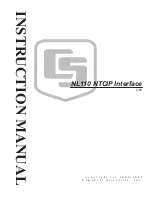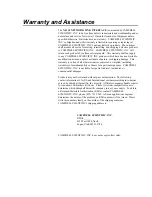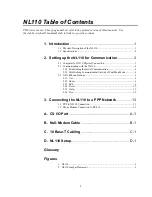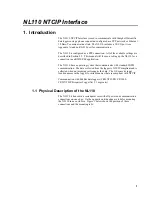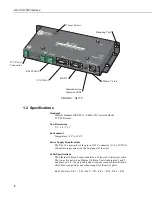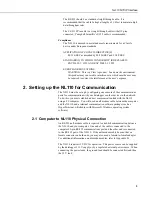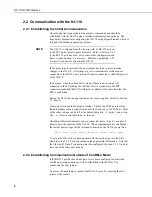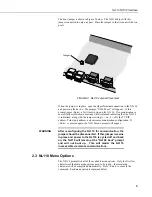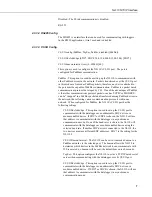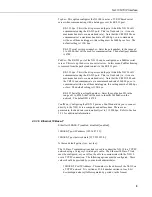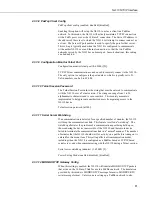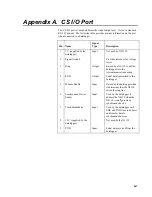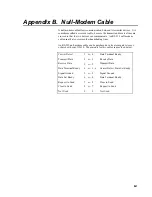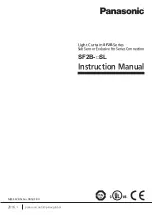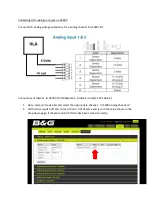
NL110 NTCIP Interface
8
PakSer - The CS I/O port of the NL110 can be configured as a PakBus serial
server. This sets up the device as a serial server. In this mode, PakBus framing
is removed from the packet and routed via the CS I/O port. Typically, the
attached device would be one that does not support PakBus communication
(such as an array-based CR10X).
CS I/O SdcAddr/bps - This option is used to set up the CS I/O port to
communicate with the datalogger as an addressable SDC device or a
modem enabled device. If SDC7 or SDC8 is chosen, the NL110 will use
that address to communicate with the datalogger in synchronous
communication mode. If one of the baud rates is chosen, the NL110 will
communicate with the datalogger as a modem enabled device using the
selected baud rate.
2.3.3.4 RS-232 Config
RS-232 config (PPP, PakBus, TcpSer, PakSer, ConfMon, disabled) [PPP]:
RS-232 bps (115k, 38k, 19k, 9600, 4800, 2400, 1200, 300) [38k]:
This option configures the NL110's RS-232 port for communication. The port
can be set up to communicate with a datalogger or other communications
device (short haul modem, RF modem, phone modem), or to be connected to
directly and configured for communication. The setup options for the port are
PPP, PakBus, TcpSer serial server, PakSer , or ConfMon (configuration
monitor).
PPP – Point to point protocol.
PakBus - This option is only used when setting up the NL110 to communicate
with other PakBus devices in the network. Packets transferred over the RS-232
port in this mode are framed as PakBus packets; therefore, any device attached
to the port must be capable of PakBus communication. PakBus is a packet
based communications protocol developed by CSI. One of the advantages of
PakBus is that other communications protocol packets, such as TCP/IP or
MODBUS, can be "wrapped" in a PakBus packet and transferred among
PakBus devices in the network, thus allowing various communication protocols
within one network. When configured for PakBus, the NL110's RS-232 port
has the following settings:
RS-232 bps - This is the bits per second (bps) at which the NL110 will
communicate using the RS-232 port. This is a fixed rate (i.e., it is not a
maximum baud rate or an autobaud rate). Note that the CR10X-2M
communicates at a maximum baud rate of 9600 bps, so to communicate
with one of those dataloggers, this setting must be 9600 bps or less. The
default rate is 115K bps.
PakBus Beacon Interval - The NL110 can be set to transmit a beacon to a
PakBus network via the selected port. The beacon allows the NL110 to
determine which devices in the PakBus network it can communicate with.
Note that because a beacon is broadcast to all devices, it can interfere with
other communication in the network (such as RF), so a frequent beacon
may not be desirable. If 0 is entered, no beacon will be sent; the default
beacon is 60 seconds.
Содержание NL110
Страница 4: ...This is a blank page...
Страница 18: ...NL110 NTCIP Interface 14 This is a blank page...
Страница 20: ...This is a blank page...
Страница 22: ...This is a blank page...
Страница 24: ...This is a blank page...
Страница 28: ...This is a blank page...
Страница 29: ...This is a blank page...

